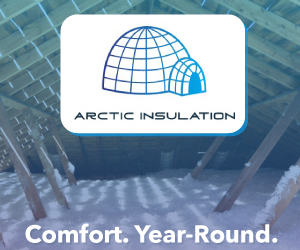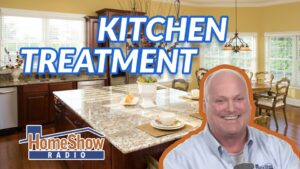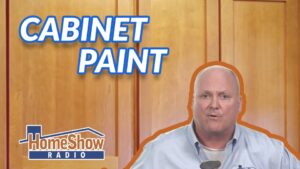Cabinets represent a key decision when remodeling your kitchen. Especially what kind of cabinet. Pre-fab? Customized? Or, true custom cabinets. Before you spend one nickel, be sure you’re making an informed decision about what kind of cabinet is right for you.
Just to be clear, we recommend true custom cabinets for reasons you’ll read about shortly. But, most of all because a custom cabinet is created for your specific need and style.
What are true custom cabinets?
Too many times pre-fab cabinets are sold as custom because they provide a level of customization. That means adding your touch to what someone else has already chosen. Instead, true custom cabinets are built to exact specifications, offering endless options such as materials, designs, finishes, and accessories—like the ones TriFection built for Karen.
“When I saw these cabinets for the first time, installed, I was blown away by the detail and the workmanship,” Karen says.
Two basics of cabinets
Cabinets are divided into two basic categories:
Base cabinets get the most attention, while wall cabinets compromise for aesthetic features—windows, backsplashes, etc. that add appeal to your kitchen. But, there’s a change in base cabinets fro doors to drawers. That’s because drawers make storage more accessible.
Wall cabinets often extend to the ceiling. This allows you to better use of high-up areas for storing serving-ware, cookware, and other seldom-used items. Wall cabinets can also run from floor to ceiling. This gives you an interesting accent piece and lots more storage.
Custom cabinets: framed or frameless
Chances are your kitchen has a framed cabinet. These traditional cabinets have a frame around the openings. Doors attach to this frame. Frameless cabinets, popularized in Europe, lack this frame. Doors attach right to the cabinet’s side creating the frameless look usually found in contemporary kitchens. While frameless provide more open access, this is a matter of design choice and personal style.
Start with function and beauty
Get the idea there are a dizzying number of choices? We’re just getting started. How will you design the interior space of your cabinets? What kinds of pullouts might make sense? Personalizing your kitchen will make it something you’ll enjoy for years. It’s one reason TriFection provides a design consultant to assist you in navigating all the choices needed to make sure you get custom cabinets you will enjoy for years to come.
Why function comes first
Consider how your kitchen is organized. What would you upgrade? Change? Eliminate? How do you use your kitchen most? How would a growing family impact the design? These are factors to consider before choosing wood-type or countertops.
What’s on your hate list?
Live with your kitchen for a few weeks. Make a list of what works and what doesn’t—especially what doesn’t. It’s easier than you think to create a list of things you hate about your current cabinets—their arrangement, functionality, etc.
Doing this homework up front focuses your design choices and improves the likelihood you’ll get the finished custom cabinets you can enjoy for a long time to come.
Optimize every inch of your kitchen
Before starting on cabinet design choices, think efficiency first. Cabinets are deep. Do you have a plan for how you’ll use those back and behind spaces. Does it make sense to add drawers to make accessing the back easier?
Then there’s your island. How about extending the countertop to allow for stools or seating? Looking under the island, does it make sense to have pullouts for pans or baking sheets? Do you have plugs on the island for appliances?
An efficient kitchen is one that’s fun to use for meals and entertaining.
Custom cabinets mean choices
Buying pre-fab or semi-custom cabinets means buying decisions others have made for you. Custom cabinets are more like walking into a car dealership and having them build you a car fro the ground up. Here are some of the basic choices you’ll need to make:
Door profile & style
Doors are the most visible part of your custom cabinets. That makes your choice of door profile super important. Start with the door profile itself. What look and feel do you like best? What about the door style itself. There’s no right or wrong here. It’s your kitchen, your choice.
Wood type & color
Cherrywood is a popular wood for cabinets. Its grain structure looks great. On the other hand, you might be more of an oak person, or Alder, or hickory. Like the profile and style of your doors, wood-choice comes down to whether you’re going to stain or paint and what look you want for the kitchen in general.
Personalize with pulls.
Pulls, handles, and knobs add a personal touch to every cabinet. Carefully consider whether you want something traditional, modern, or even antique. This simple component has a big impact on your new cabinets.
But, do you really need new cabinets?
It’s possible what you may need is cabinet refacing. If your existing cabinets are good quality, are in working condition, and the layout works for you, refacing is an affordable alternative. That means replacing the doors, drawers and drawer fronts—the part of the cabinet you see most. It’s faster because your cabinets themselves remain and the work is done offsite.
Custom cabinets built to last
Tom Tynan’s choice for custom cabinetry is TriFection. Their craftsmen use time-tested cabinet building techniques that create furniture-quality cabinets. That’s why you’ll find TriFection cabinetry not just in kitchens and baths, but in living rooms and home offices as well. That’s why Tom chose TriFection as his HomeShow Pro for custom cabinets.



